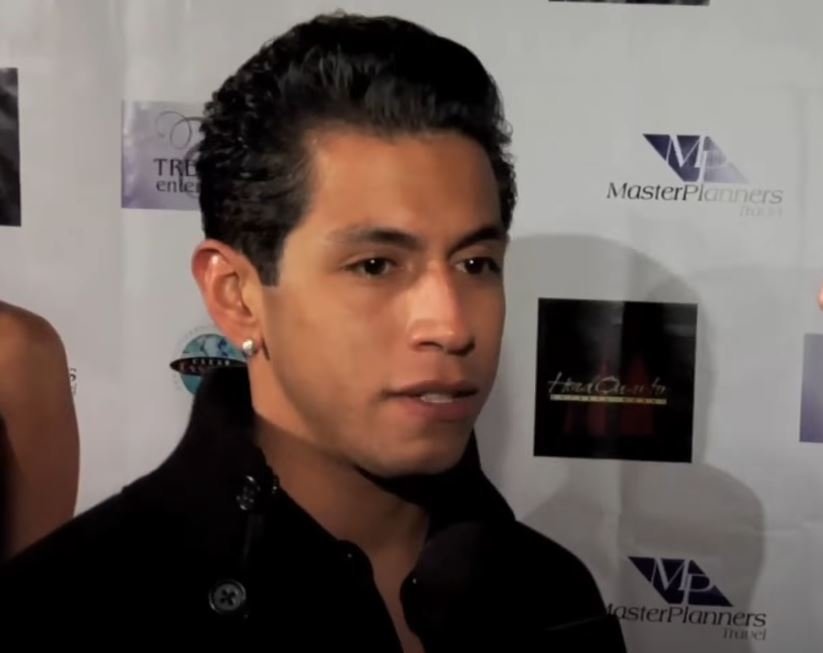
The tale of Rudy Youngblood defies the norms that are frequently associated with success in Hollywood. Although he received critical acclaim and international recognition for his ground-breaking performance in Apocalypto, his estimated net worth of $500,000 paints a strikingly different financial picture. Driven by personal values and an unwavering commitment to cultural identity, Youngblood’s post-film path took a quieter, more complex turn than many others who ride the wave of a single breakout role toward a multi-million dollar trajectory.
When director Mel Gibson cast Youngblood as Jaguar Paw, the bold lead in the visually stunning and linguistically ambitious Apocalypto, he shot to fame. His commitment to the role was evident as he performed his own stunts and mastered Yucatec Maya. The movie’s success—it made over $120 million—might have pushed a normal newcomer into luxury endorsements or franchise territory. Instead, it represented a profound nexus between vulnerability and visibility for Youngblood.
Rudy Youngblood – Personal and Career Highlights
| Attribute | Details |
|---|---|
| Full Name | Rudy Youngblood |
| Date of Birth | September 21, 1982 |
| Age | 42 |
| Birthplace | Belton, Texas, USA |
| Nationality | American |
| Ethnicity | Comanche (self-identified), Yaqui ancestry |
| Height | 5 ft 11 in (180 cm) |
| Occupation | Actor, Musician, Dancer, Activist |
| Notable Role | Jaguar Paw in Apocalypto (2006) |
| Estimated Net Worth | $500,000 |
| Activism | HIV/AIDS awareness, youth advocacy, Indigenous representation |
| Major Recognition | Best Actor, First Americans in the Arts Awards (2007) |
| Legal Controversy | Arrested in Athens, Greece (2024) |
| Languages Spoken | English, Spanish, Yucatec Maya |
| Social Media Presence | Instagram @rudyyoungblood62 |
His career has changed over the last 20 years with lesser-known movies like Wind Walkers, Beatdown, and Crossing Point. These roles maintained his storytelling connection, but they notably lacked the marketing reach and financial resources of his debut. Here, the disparity between financial gain and artistic presence is especially noticeable. Despite being steady, his net worth of $500,000 is far less than that of many of his peers who used their initial celebrity to fund business endeavors. This disparity draws attention to the difficulties that Indigenous actors frequently encounter when their stories are only honored through historical prisms and are rarely given the opportunity to develop beyond them.
Instead, Rudy went after impact. Beyond the limelight of Hollywood, he became an activist for HIV/AIDS, especially in Native communities. Youngblood put his emotional visibility ahead of financial gain by taking part in AIDS walks, going to hospitals, and candidly talking about how the disease affected his own family. He raised awareness of frequently disregarded issues through strategic advocacy, particularly in media circles where Indigenous health disparities are rarely discussed. This approach has been incredibly successful in humanizing statistics that are frequently abstract, despite not being very profitable.
Youngblood was shaped by adversity while growing up in Belton, Texas, and came to adulthood with a toolkit of practical experience. At the age of ten, he started working in construction, learning bricklaying and carpentry techniques from the older men in his immediate vicinity. He was creative and athletic and received college scholarships in track and art, but he decided to concentrate on Native dance instead. Instead of pursuing mainstream fame, he made the audacious and culturally grounded choice to perform with the American Indian Dance Theatre.
Indigenous artists have gradually started to reclaim stories that commercial cinema has distorted over the last ten years. Authentic representation has been pushed by directors like Sterlin Harjo and actors like Zahn McClarnon and Devery Jacobs. Rudy Youngblood’s early appearance feels especially novel in this regard. He helped start inclusive trends rather than waiting for them to happen. Even though he played fewer movie roles, his message became more and more relevant.
A setback occurred when Youngblood was taken into custody in Athens, Greece, towards the end of December 2024. He allegedly threatened a police officer with a knife while intoxicated and confused. It was made more difficult by the fact that his visa had expired. Even though the incident made headlines, it also brought to light a reality that is frequently overlooked: the psychological and emotional costs of living in the spotlight, particularly when one’s notoriety is fleeting and community leaders are far away. This incident might have represented a fall from grace for many. In this context, however, it reads more as a reminder of the difficulties that artists encounter when their personal networks of support do not change in tandem with their public personas.
Youngblood continues to pursue her artistic endeavors in spite of these obstacles. He still performs, writes music, and works on community-based initiatives. His modest but genuine online persona is full of updates about cultural work, artistic sketches, and personal reflections. He steers clear of the influencer stereotype by emphasizing inspirational and educational messages, many of which are based on his personal experiences.
The noteworthy aspect of Rudy Youngblood’s financial story is that, despite its modesty, it is not a failure. It’s a change of direction. He has maintained his emotional authenticity and creative freedom by refusing to commercialize his fame. His story provides a remarkably similar alternative route for aspiring actors who must make similar choices: one that puts community before fame and purpose before profit.
Youngblood represents a change in perspective in the larger discussion of success and net worth. It is impossible to quantify his influence solely in monetary terms, especially when it comes to Indigenous representation and health awareness. His legacy depends on cultural contribution rather than residual checks, as is the case with many people who come from economically disadvantaged but culturally rich backgrounds.
